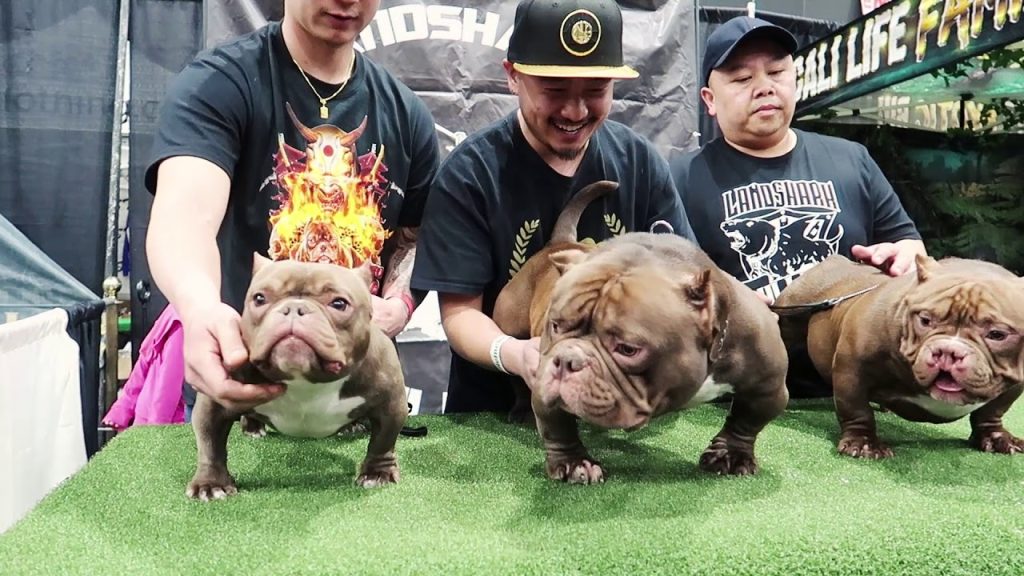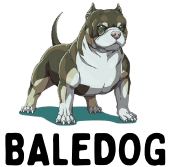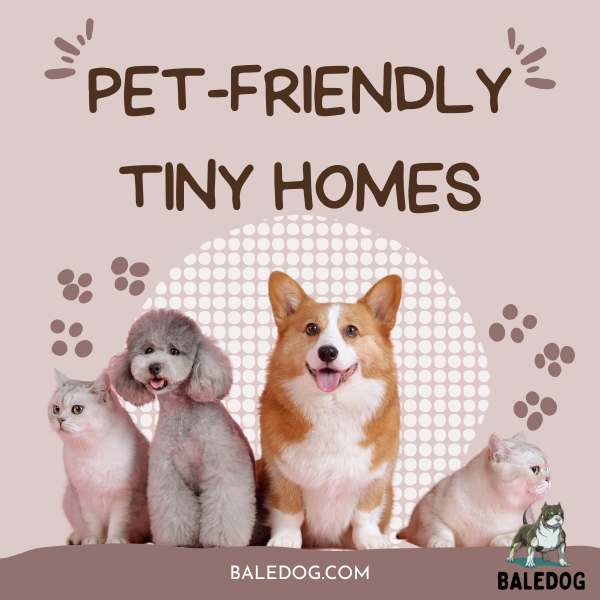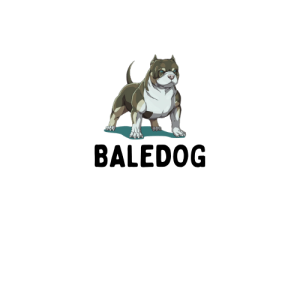Tiny homes are all the rage right now, and it’s no surprise! They offer an incredible sense of freedom, simplicity, and often a more sustainable lifestyle. But if you’re a pet parent, you might be wondering: “Can a tiny home work for me and my dog (or cat, rabbit, or other furry companion)?”
The good news is, yes—pet-friendly tiny homes are not only possible but can be a wonderful place for both you and your pet to thrive! In fact, with a little creativity, some smart planning, and a focus on maximizing space, your tiny home can become a cozy and efficient space for both you and your animal companion.

This article will guide you through everything you need to know to make your tiny home pet-friendly, from layout ideas and pet-proofing tips to furniture recommendations and clever storage solutions. Let’s get started!
Why Choose a Tiny Home for You and Your Pet?
Before we dive into the practical tips, let’s take a moment to talk about why tiny homes can actually be perfect for pets.
1. Less Clutter Means More Freedom for Your Pet
Tiny homes encourage minimalist living, which means there’s less clutter to navigate. With fewer items to bump into, your pet can move around more freely, and you’ll be able to easily see them no matter where you are in your home. This open layout can lead to a safer and less stressful environment for pets, especially if they’re nervous or prone to anxiety.
2. Easier to Maintain
Living in a tiny space means less to clean! When your pet tracks dirt in or sheds fur, it’ll be much quicker to clean up than in a larger house. Less space to clean also means you’ll have more time for activities with your pet, like walks, playtime, and cuddling.
3. More Time Together
Tiny homes are all about efficiency, and a smaller space means you’ll naturally spend more time together with your pet. Whether you’re chilling on the couch or cooking in the kitchen, your pet will be nearby, helping to strengthen your bond.
4. Emphasis on Outdoor Spaces
Many tiny homes come with outdoor decks, gardens, or nearby trails, offering plenty of space for your pet to explore and exercise. Whether you live in the country or a more urban area, tiny homes often prioritize outdoor access, which is key for pets who need room to play and roam.
1. Choosing the Right Layout for Your Pet-Friendly Tiny Home
The layout of your tiny home plays a crucial role in how well it works for both you and your pet. Here are a few layout tips to make your home more pet-friendly:
A. Open Floor Plan
An open floor plan allows both you and your pet to feel more comfortable and spacious. With fewer walls and partitions, you create more flow and less restriction for your pet to roam freely. This is especially helpful for dogs or active pets that need space to move around.
For example, consider a layout with an integrated living and kitchen area where both you and your pet can interact and spend time together.
B. Pet-Specific Zones
While you want to maximize open space, it’s still important to dedicate pet-specific areas for things like sleeping, eating, and playing. Creating a pet nook near your bed or in a quiet corner of your tiny home helps give your pet their own space. This could be a cozy dog bed, a designated feeding area, or a scratching post for your cat.
C. Elevated or Built-In Sleeping Areas
One of the best features of tiny homes is their ability to maximize vertical space. To keep the floor clear for movement, consider building a lofted sleeping area for your pet or integrating a pet bed into the wall. This keeps the floor space free for activities and provides your pet with a safe, elevated space to sleep away from the hustle and bustle of the tiny home.
D. Multi-Use Furniture
Choose multi-functional furniture to save space and serve your pet’s needs. For example, a storage ottoman can double as a pet’s resting spot. Built-in cabinets and shelves can house your pet’s toys, food, and accessories.
2. Pet-Proofing Your Tiny Home
Living in a smaller space means there are fewer places for your pet to hide if they’re scared or anxious. It also means that there’s less room to keep dangerous items out of their reach. Here are a few ways to pet-proof your tiny home and make it a safer place for your furry friend.
A. Secure Small Spaces and Cabinets
Tiny homes have many clever storage solutions, but some of these storage spaces might be too tempting for your pet to resist. Make sure that cabinets, drawers, and pantry spaces are pet-proofed to prevent curious cats or dogs from getting into food or dangerous items. Consider childproof locks on cabinets and installing gates or barriers to keep pets away from restricted areas.
B. Safety for Stairs and Lofted Areas
If your tiny home has stairs or lofts, make sure they’re safe for your pets to navigate. Use non-slip treads on stairs, and make sure your pet can easily climb without the risk of falling. For lofts, consider installing a gate to keep pets from jumping or falling off.
C. Soft Flooring
In a tiny home, your pet will likely spend a lot of time on the floor, whether it’s for play, rest, or lounging. Pet-friendly flooring such as cork, carpet tiles, or rubber flooring offers a soft, easy-to-clean surface that’s comfortable for your pet to walk and nap on. These materials are also easy to clean and help minimize the mess caused by shedding and accidents.
D. Toxic Plants and Chemicals
Pet owners know that certain plants, cleaning supplies, and other chemicals can be toxic to pets. In a tiny home, these items can be in close proximity to your pet, so be mindful of what’s within reach. Keep toxic plants out of your tiny home, like aloe vera, lilies, and ivy, and use pet-safe cleaning products.
3. Maximizing Comfort and Convenience for Your Pet
Living in a tiny home means making smart choices about how to use your space. It’s about creating comfort not only for you but also for your pets. Here are a few tips to ensure your tiny home is as comfortable and functional as possible for your four-legged friend.
A. Outdoor Access
One of the main challenges of living in a tiny home is providing enough outdoor space for your pet, especially if you live in an urban environment. Look for tiny homes with an outdoor deck, garden, or nearby walking trails that give your pet plenty of room to roam.
For example, if you’re in a more urban environment, consider installing a pet balcony or a fenced-in yard where your dog can get some fresh air. If you have a cat, a small catio (a cat patio) can provide a safe space for your feline friend to enjoy the outdoors.
B. Small Pet-Friendly Furniture
When choosing furniture, think small and cozy. A compact dog couch, cat tree, or even a pet-sized futon will make your pet feel at home without taking up too much space. Remember, furniture that’s easy to clean is essential—look for washable covers or furniture made from pet-resistant materials.
C. Build for Quiet and Rest
Pets, especially cats and older dogs, tend to enjoy having a quiet, private space to retreat to. Consider building an area where your pet can go to rest when they want some peace and quiet, whether it’s a small nook under a bench, a cushioned platform next to a window, or a cushioned area in your loft.
D. Consider Pet-Friendly Appliances
Tiny homes often make use of compact appliances to save space. Consider pet-friendly appliances that make caring for your pet easier, such as:
- Built-in food and water dispensers
- Small, pet-sized washing stations (for baths or cleaning paws)
- Pet doors or pet-flap doors that allow your pet to go in and out of your tiny home freely.
4. Managing Space for Your Pet’s Essentials
In a tiny home, storage can be a bit tight, but there’s still room for your pet’s toys, bedding, food, and grooming tools. Here’s how you can manage pet storage without taking up too much room:
A. Vertical Storage
Take advantage of wall-mounted shelves or overhead cabinets to store your pet’s food, toys, and grooming supplies. This keeps them out of the way while still easily accessible.
B. Under-Bed Storage
The space under the bed is a perfect place to store pet essentials like extra food, treats, and seasonal clothing for your pet. You can use under-bed bins to keep everything organized and out of sight.
C. Multi-Use Furniture
Look for furniture that doubles as storage. For instance, a storage ottoman can hold your pet’s toys, and a benched entryway can be a place to store leashes, coats, and blankets. The more you can integrate pet storage into your living space, the more organized your tiny home will be.
5. Conclusion: A Tiny Home That’s Big on Love
Living in a tiny home with a pet is all about making the most of what you’ve got. By being thoughtful about your pet’s needs—whether that’s space to play, a cozy spot to sleep, or a safe environment to explore—you can create a home that’s perfect for both of you.
Tiny homes provide the perfect opportunity for a simpler, more connected lifestyle. And with a little creativity and planning, you and your pet can live together comfortably, happily, and in harmony.
Ready to make the move to a tiny home with your pet? The world of compact living awaits, and it’s a lot more spacious (and pet-friendly) than you might think!
6. Considerations for Different Types of Pets
While the focus is often on dogs and cats, tiny homes can be pet-friendly environments for a variety of animals. Whether you have a rabbit, bird, or even a reptile, the principles of creating a comfortable, safe space can be adapted to suit any pet’s needs. Here are some tips for making a tiny home ideal for different kinds of pets:
A. Small Pets (Rabbits, Guinea Pigs, Hamsters)
Small pets like rabbits, guinea pigs, or hamsters thrive in smaller spaces as long as those spaces are well-organized and safe. Here are a few things to keep in mind:
- Cages and Pens: Choose a cage or pen that is spacious enough for your small pet to move around but compact enough to fit within your tiny home. Consider a multi-level cage for added space if you’re short on room.
- Designated Play Area: When not in their cages, small pets need a secure area where they can play and explore. This could be a portion of your living room or an enclosed area within the home.
- Temperature Control: Small pets, especially rabbits, can be sensitive to temperature changes. Ensure your tiny home has good ventilation and is temperature-controlled to keep them comfortable.
B. Birds
Birds are wonderful companions in small spaces because they don’t need a ton of room to fly. However, their cages and accessories still need to be well thought out:
- Large Cages: Even small birds like parakeets or finches need cages that are roomy enough for them to spread their wings and move around. Try to place the cage in a part of your tiny home that offers natural light, like near a window, while ensuring it’s away from drafts or temperature extremes.
- Aerial Space: Many birds love to fly around. If possible, set up a small area where they can fly safely. This could be a designated room or a section of your living space with barriers like open shelving or ceiling hooks for them to perch on.
- Noise Management: Birds can be noisy, so it’s important to consider your own tolerance and the noise level in your tiny home. For peace of mind, make sure there’s a quiet retreat where both you and your bird can relax if needed.
C. Reptiles (Snakes, Lizards, etc.)
Reptiles need specialized care, especially when it comes to temperature and humidity levels. Here’s what to consider:
- Terrariums and Tanks: Many reptiles need a tank or terrarium for proper living conditions. These tanks can take up some floor space, but you can often find compact models or even wall-mounted units for space-saving. Make sure that the tank is placed in a location with adequate warmth and light.
- Enrichment: Reptiles often need accessories like rocks, plants, or climbing structures. These can be integrated into the design of your tiny home while still keeping the space organized and functional.
- Climate Control: Reptiles are sensitive to temperature changes. You’ll need a heating pad or ceramic heater to ensure that your pet’s habitat remains warm and consistent, without disrupting your tiny home’s overall temperature.
7. Sustainable Living with Pets in Tiny Homes
Tiny homes are often built with sustainability in mind. If you’re passionate about eco-friendly living and want to extend that to your pet care routine, here are some green tips for living in a pet-friendly tiny home:
A. Eco-Friendly Pet Products
Look for sustainable pet products that align with your eco-conscious values. Here are a few examples:
- Biodegradable waste bags: These are a simple swap from traditional plastic bags.
- Natural pet food: Opt for organic or locally sourced pet food.
- Eco-friendly toys: Choose toys made from recycled materials or sustainable sources (e.g., hemp, natural rubber, or bamboo).
- Pet grooming products: Use eco-friendly shampoos and grooming tools made with natural materials.
B. Off-Grid Options
Many tiny homes are designed to be off-grid, meaning they can run independently from the municipal power grid. If you want to live sustainably with your pet, consider integrating features like:
- Solar panels: Solar energy can power lights, fans, and other devices without the environmental impact of traditional energy sources.
- Rainwater harvesting: Set up a system to collect rainwater for pet-related uses like cleaning, watering plants, or washing your pet’s bowls.
C. Waste Management
Tiny homes often rely on more efficient waste management systems. Consider eco-friendly pet waste solutions, such as:
- Composting pet waste: With the right system, you can compost dog or cat waste (be sure to do this safely to avoid any harmful pathogens).
- Pet waste composters: These specialized composters are designed to break down pet waste in an environmentally responsible way.
8. Making the Most of Outdoor Spaces
Living in a tiny home doesn’t mean you have to sacrifice outdoor space. In fact, outdoor areas are essential for your pet’s mental and physical health. Here’s how to make the most of your tiny home’s outdoor space:
A. Enclosed Yards or Patios
If you have access to a small yard, fenced-in patios, or a deck, create a pet-friendly oasis by:
- Installing high fences (for dogs) or mesh enclosures (for small pets or birds) to keep your pets safe.
- Adding pet-friendly plants such as non-toxic grasses or shrubs where your pets can play and explore.
- Incorporating a pet pool for hot summer days (this is especially fun for dogs that love water).
B. Pet-Friendly Outdoor Gear
If you enjoy spending time outside with your pet, consider investing in:
- Portable pet fences that can create temporary enclosures in parks or other outdoor spaces.
- Pet backpacks or pet strollers for pets who might struggle with longer walks.
- Outdoor pet beds or blankets for outdoor lounging, perfect for picnics or trips to the beach.
C. Dog Parks and Trails
Many tiny home communities are located near parks or nature trails, which is perfect for pet owners who enjoy hiking, running, or walking. If your tiny home is located in an area with access to these spaces, you and your pet can enjoy regular outings, socializing with other pets, and getting plenty of fresh air and exercise.
9. Tips for Small Dog Owners in Tiny Homes
Tiny homes tend to be better suited for small to medium-sized dogs. However, with the right planning, larger dogs can live in tiny homes as well. If you have a small dog, here are some specific tips for creating the perfect home environment:
A. Small Dog Beds and Couches
Small dogs need a cozy bed or couch to curl up on. You can easily integrate pet-sized furniture into your tiny home’s design. Whether it’s a bed under a coffee table or a small cushion near your feet, small dogs often prefer snuggly spaces.
B. Managing Dog Waste
For small dog owners, waste management becomes easier due to their size. Consider using a small litter box or setting up an indoor potty area if you’re in a high-rise or urban area. For dogs that go outside, ensure they have a clear route to a fenced-in yard or pet door that leads to a secure potty spot.
C. Interactive Playtime
Tiny homes may be limited in space for running around, but you can provide interactive play for your small dog. Consider small indoor agility kits or interactive toys to keep them mentally stimulated. Puzzle toys, treat dispensers, and tug-of-war ropes are great ways to engage your small dog without requiring too much space.
10. Conclusion: Pet-Friendly Tiny Homes Are the Future of Living
Tiny homes are more than just a trend—they represent a lifestyle that prioritizes simplicity, sustainability, and a strong bond with your pet. By thinking creatively and making your space as efficient as possible, you can provide a safe, comfortable, and fun home for both you and your furry friend.
While living in a tiny home with a pet does present some challenges, the rewards are immense. You’ll enjoy the company of your pet more than ever, spend less time cleaning, and have more time to relax and enjoy life. Plus, with outdoor spaces and green living options, your pet will have a lifestyle that’s as eco-friendly as it is fulfilling.
Are you ready to make the leap into tiny home living with your pet? It’s a decision that will bring you closer together, simplify your life, and provide your pet with a happy, fulfilling home.


